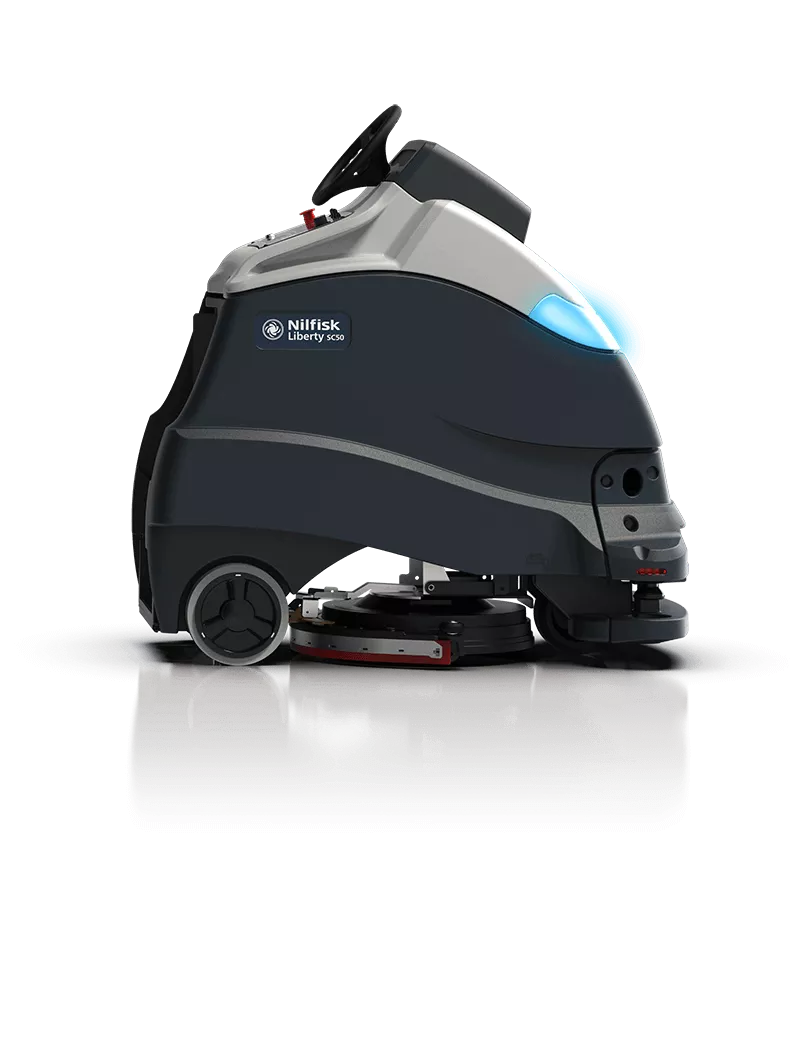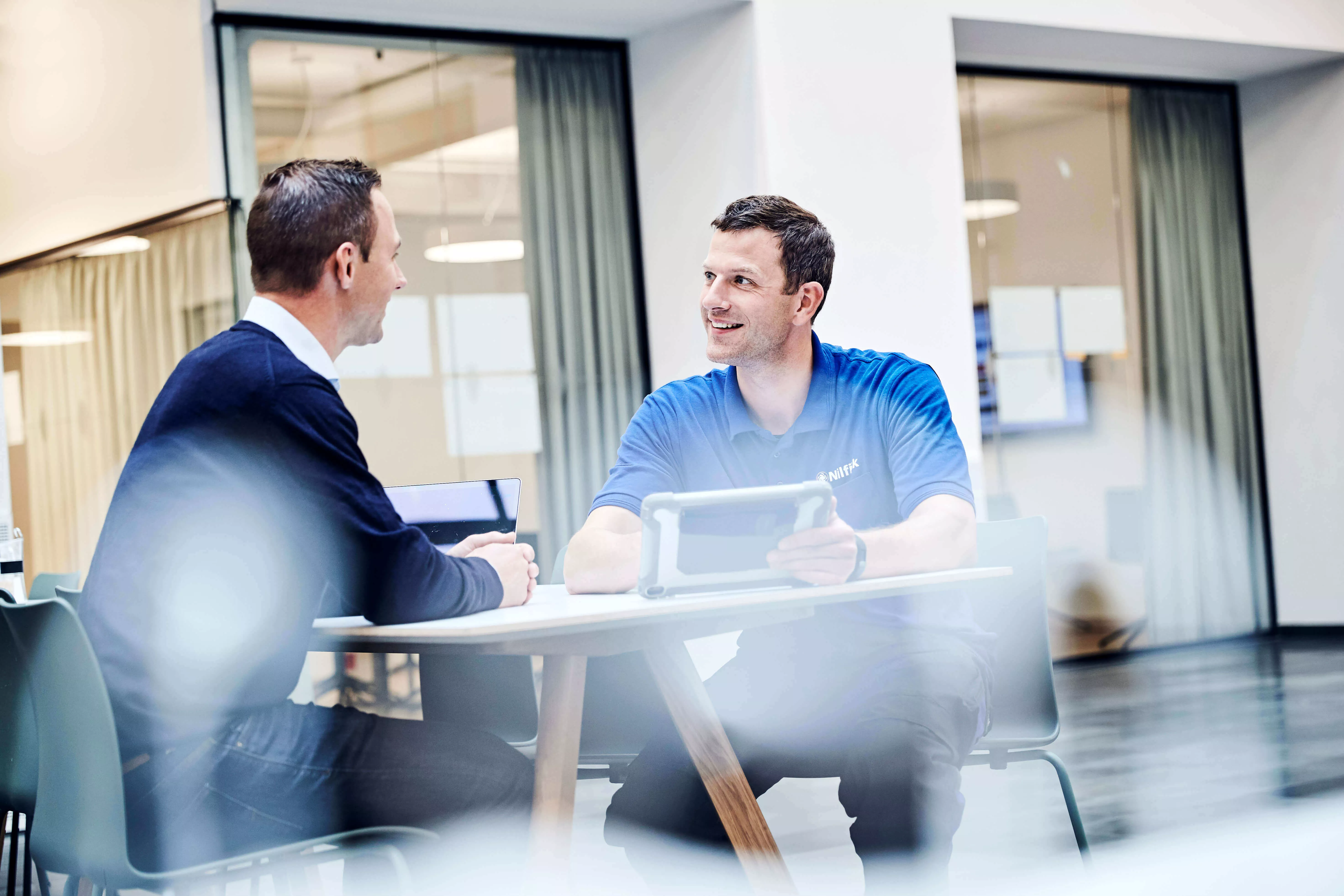These days, robotics is the talk of the town in the professional-cleaning industry, but robots are nothing new; they have worked alongside people in factories and warehouses for decades. The International Federation of Robotics (IFR) confirms that more than 400,000 industrial robots were shipped in 2018, with a slight reduction in 2019, and average growth of 12% is expected from 2020 to 2022. (Source)
As technology advances, we are beginning to see greater diversity among sophisticated workplace robotics – and autonomous cleaning is a great example.
“Now, in addition to traditional industrial robots, we have professional service robots, collaborative robots that work alongside workers, and mobile autonomous robots in a wide range of industries and enterprises,” explains Vladimir Murashow, senior scientist and a member of the Center for Occupational Robotics Research. (Source).
Autonomy advancements increase safety requirements
While traditional industrial robots often perform monotonous tasks, in unobstructed environments like assembly lines, self-operating cleaning machines are now designed to function in complex environments – with moving people, different obstacles which are often moved around, and changing work conditions.
Naturally, this raises the stakes when it comes to safety.
“Robot-human collaboration presents a new workplace-risk profile that we don’t yet understand fully,” explained Director John Howard when the National Institute for Occupational Safety and Health (NIOSH) announced the launch of their Center for Occupational Robotics Research in 2017.
“This is a new field for safety and health professionals, and little government guidance or policy exists regarding safe integration of robots into the workplace,” says Howard.
However, according to Charalambos Freed, Head of Standardization and Government Relations at Nilfisk, this situation has changed: in December 2017, the first safety standard aimed specifically at the functions of commercial robotic-floorcare machines, CSA/ANSI C22.2 No. 336-17, came into effect. Developed by the American National Standards Institute and the Canadian Standards Association, it requires that commercial robotic-floorcare machines run safely and smoothly in public, dynamic, and populated environments.
“With this new standard, all commercial robotic-floorcare machines sold in the US and Canada must satisfy the basic safety requirements of a commercial floorcare machine, and CSA/ANSI C22.2 No. 336-17, in order to receive certification,” explains Freed, who chairs the commercial robotic-floorcare machine standards group within the CSA, and worldwide at IEC*.
According to the American National Standards Institute, a third-party certification “provides unique credibility” and serves as an independent verdict that the product is safe.
In some markets, such as the US, employers are legally obliged to conduct due diligence on equipment used at their facilities; failing to comply can lead to product recall, market withdrawal, or fines. Using equipment that meets industry standards is a robust approach to satisfying this legal requirement.
According to Freed, the safety standard for commercial robotic-floorcare machines creates a safe environment for customers that want, or need, to protect occupants in a dynamic environment – whether they are employees or visitors.
“If a machine is third-party certified according to harmonized standards, the machine is presumed to be compliant with the requirements of applicable safety directives and regulations. That certification offers reassurance that your facilities are safe once you start implementing autonomous solutions in your cleaning operation”, explains Charalambos Freed.

Facts about CSA/ANSI C22.2 No. 336-17
● Published as a National Standard of Canada by the CSA Group, and approved by the American National Standards Institute (ANSI) as an American National Standard.
● The standard came into effect in December 2017; all suppliers seeking third-party certification of autonomous machines must meet safety requirements.
● In most countries, health and safety laws require employers to undertake due diligence on equipment at their facilities, in order to prevent workplace accidents or injuries. Using equipment that meets industry standards helps satisfy such requirements.
● As of now, the safety standard applies to the US and Canada. As there is no local market standard, the North American standard is widely accepted in Australia and New Zealand.
The new safety requirements for commercial robotic-floorcare machines focus on the following features:
- Stopping distance
- Obstacle-detection/avoidance
- Abrupt surface fall-detection
- Critical-zone detection
- Parking brakes
- Max speed
- Machine-start audio signal
To put it simply, the new safety standard ensures that a certified autonomous machine will operate safely in areas with a combination of people, obstacles, drop-offs, and other potential hazards.
Amit Khamkar, Head of Connected Autonomous Solutions at Nilfisk, confirms that the Nilfisk Liberty SC50 is third party-certified according to the new safety standard.
“The Nilfisk Liberty SC50, which is the first autonomous solution on the market from Nilfisk, has been third party-certified against the new safety standard, and bears the cETLus Mark of Approval. The certification has been carried out by an independent laboratory, formally accredited by the U.S. Occupational Safety and Health Agency.”
Additionally, the Nilfisk Liberty SC50 passed third-party global IEC certification, and third-party approval in Europe, to show presumption of conformity to the applicable Safety Directives and Regulations.
More information on the new safety standard can be accessed at the CSA group site

experience autonomous cleaning
Book your Liberty SC50 demo today
How does the process work?
Once you request your Liberty SC50 demo, an Intelligent Cleaning expert will get in touch with you to schedule a meeting.
- STEP 1: Understanding your need. On the call, we will ask questions to help us understand your current cleaning operation, process, and ideal fit for autonomous cleaning.
- STEP 2: Scheduling the visit. We will pick an on-site location, and reserve a 2-hour time slot that works best for your team.
- STEP 3: Seeing the Liberty SC50 in action! Our team will bring the Liberty SC50 to your site for a live demonstration.
Learn more about the Nilfisk Liberty SC50
After years of development, testing, refinement, live beta-testing, and more refinement, it’s ready for the biggest, toughest jobs you can throw at it. In airports, schools, sports and entertainment facilities, and beyond, the Liberty SC50 will get the dirtiest floors clean, any time of day, with no one watching over it.
So if you’re ready for autonomous cleaning, the Liberty SC50 is ready for you.


